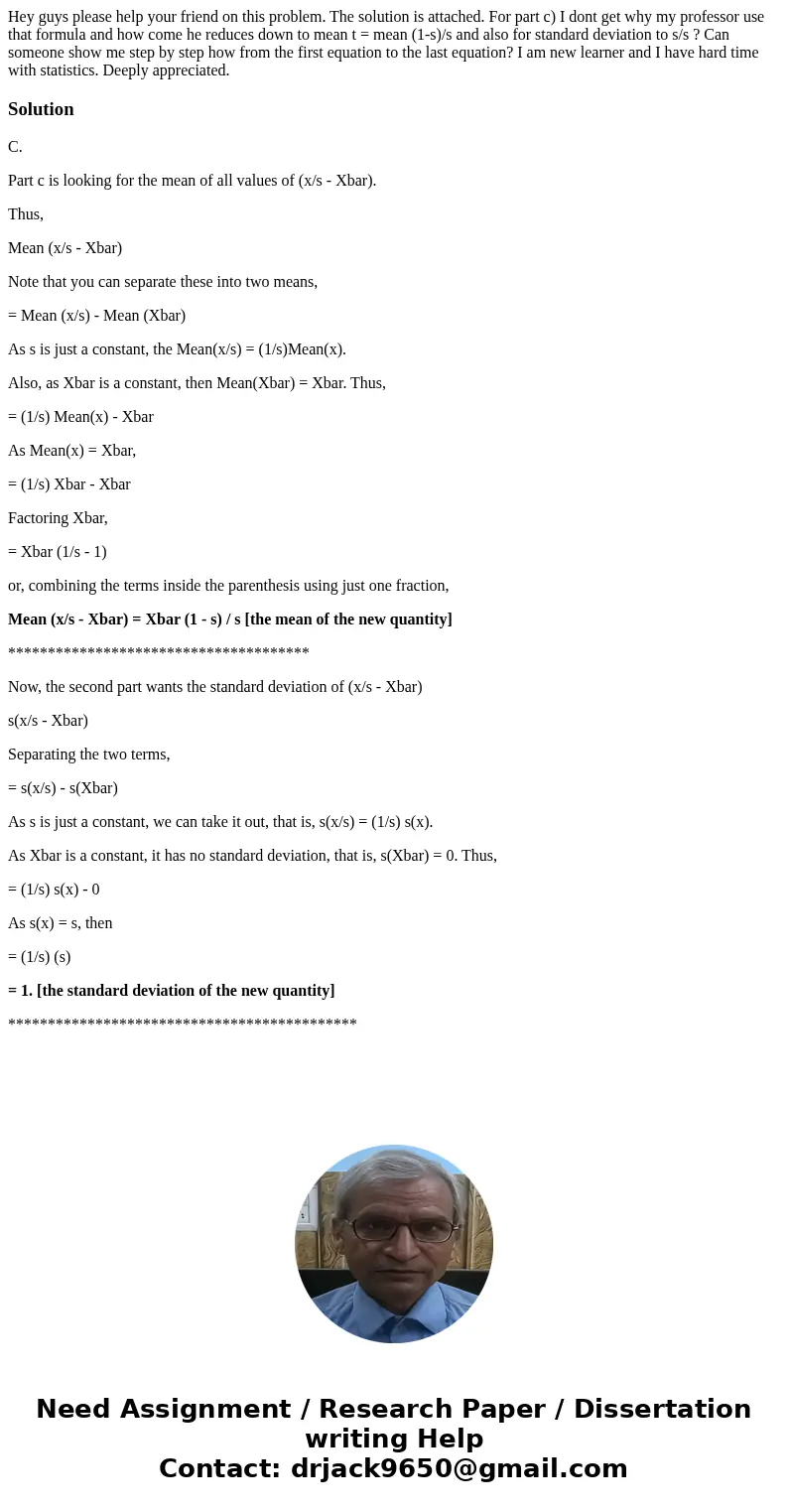Hey guys please help your friend on this problem The solutio
Hey guys please help your friend on this problem. The solution is attached. For part c) I dont get why my professor use that formula and how come he reduces down to mean t = mean (1-s)/s and also for standard deviation to s/s ? Can someone show me step by step how from the first equation to the last equation? I am new learner and I have hard time with statistics. Deeply appreciated.
Solution
C.
Part c is looking for the mean of all values of (x/s - Xbar).
Thus,
Mean (x/s - Xbar)
Note that you can separate these into two means,
= Mean (x/s) - Mean (Xbar)
As s is just a constant, the Mean(x/s) = (1/s)Mean(x).
Also, as Xbar is a constant, then Mean(Xbar) = Xbar. Thus,
= (1/s) Mean(x) - Xbar
As Mean(x) = Xbar,
= (1/s) Xbar - Xbar
Factoring Xbar,
= Xbar (1/s - 1)
or, combining the terms inside the parenthesis using just one fraction,
Mean (x/s - Xbar) = Xbar (1 - s) / s [the mean of the new quantity]
**************************************
Now, the second part wants the standard deviation of (x/s - Xbar)
s(x/s - Xbar)
Separating the two terms,
= s(x/s) - s(Xbar)
As s is just a constant, we can take it out, that is, s(x/s) = (1/s) s(x).
As Xbar is a constant, it has no standard deviation, that is, s(Xbar) = 0. Thus,
= (1/s) s(x) - 0
As s(x) = s, then
= (1/s) (s)
= 1. [the standard deviation of the new quantity]
********************************************

 Homework Sourse
Homework Sourse